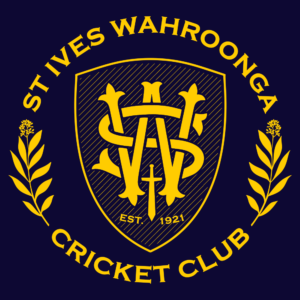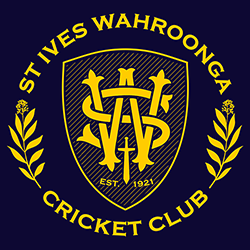33 Teams 3 Premierships
After the relative success of the late 1950s and early 1960s the Club ceased to field any teams in the Senior afternoon competition in the Hornsby Ku-Ring-Gai Cricket Association for a period of four years. The reasons for this failure at a senior level are not known, however, the name of St Ives Cricket Club did continue in the newly emerging Junior [Schoolboy] competition. With the end of the Second World War and the resultant baby boom, the Schoolboy Competition began to flourish in the early 1960s. St Ives was well represented at this junior level. One of the main driving forces behind the growth of the Schoolboy Competition was Jack Hughes who was also the force behind St Ives Cricket Club at that time. Jack was Organising Secretary of the Junior Competition for a period of eight years from 1968 to 1976. He was also made a Life-Member of the Association in 1973.
There were two main changes to the Senior Competition in the 1960s and 1970s. The first of these was in 1966 with the introduction of the Elimination Round, replacing the semi-final. Under this format all teams in their respective grades played an extra round at the end of the season with win/loss points still being allocated. At the completion of this round the two top teams in each grade then played in the final for their respective grade championship.
The other main change to the competition was the permanent introduction of the Reserve Grade competitions : A Reserve in 1971/72, B Reserve in 1973/74, D Grade in 1975/76 and D Reserves in 1978/79. The introduction of these grades on a permanent basis was necessitated by the continued growth of the Association, which led to an increased number of senior teams.
There was one other change, in fact it was a number of minor related changes, during this period, and it concerned the conditions of one-day games. Until 1964/65 all one-day games were played on a shared-time basis. From the 1964/65 season to 1969/70, teams were restricted to 24 overs per side. This was altered again in 1969/70 to 32 overs per side and again in 1973/74, when the one-day matches were restricted to 30 overs per side.
After four years in the “wilderness”, the Club was finally able to enter a team back into Senior Competition in 1966/67, when a team was nominated for the C2 Grade. The team was comprised of some young players who were still eligible to play in the Schoolboy competition and some older players, to assist them through the experience of senior cricket.
A great deal of the credit for the reintroduction of the Club into the Senior Competition must go to Kel Stein. It was through his endeavours over a number of years in recruiting players for this team, that really “kick started” the Club back into the senior ranks. When Kel stood down in the late 1960’s, he handed the reins over to Gerald “Dickie” Bird who assumed the mantle of “the father” of senior cricket in St Ives. Dickie inherited what was really a one-team club and within a couple of years helped the Club to grow sufficiently to enable it, not only to field three teams, but to have one of these teams playing in the A2 grade. He also took over the senior team at a time of great turmoil in the Club. With the Club not having fielded a senior team for four years, it’s control was now in the hands of those whose best and only interests lay with junior cricket. It was, at that time decided that the senior team should no longer be part of the Club. Ironically, the name “St Ives Cricket Club”, remained with the Seniors and the Juniors took the name “St Ives Junior Cricket Club”. Apart from being President, Secretary and Treasures of the Senior Club, for a year or so, Dickie was also elected a member of the Associations’ Executive. Dickie was made o life member of the Club in 1979.
After five consecutive Finals losses, the Club finally won it’s first premiership since 1960/61 when it captured the 1976/77 C2 Championship. This win could be seen as the catalyst for the most remarkable period in the history of St Ives Cricket Club.
During the early to mid 1970’s the Club had as one of its members, one of the most talented players in the Association, Gordon Naylor. In only seven seasons Gordon amassed an extraordinary 4206 runs at an average of 43, as an opening or top order batsman. He passed the 500 runs in a season mark on 4 occasions, hitting a total of nine centuries [including two 200’s] and 23 half-centuries along the way. As a spin bowler, Gordon also took 192 wickets at an average of 15, including 10 hauls of 5 wickets in an innings. The pinnacle of Gordon’s career came in the 1971/72 season when he scored a remarkable 1185 runs at an average of 118.5. Gordon also served as Club President for two years, from 1974/75 to 1975/76.
Other leading players of this period included:
Michael Phillips: 2199 runs at 35 over six seasons and 106 wickets at 10.6 [1972/73 to 1977/78]. In 1976/77 he hit 630 runs and passed the 500 runs in a season mark on three occasions.
George Martin: between 1969/70 and 1973/74 took 169 wickets at 11 and scored 822 runs at 39. In 1969/70 he took 61 wickets at 9.4.
R Hurst: between 1967/67 and 1970/71 he hit 1379 runs at 35, including 473 at 43 in 1967/68.
Wally Sinclair: scored 1594 runs at 29 from 1971/72 to 1975/76, including 532 runs in 1974/75.
G Beard: took 131 wickets at 10.7 in three years in the late 1960’s, including 54 at 9.5 in 1966/67.
Peter Norrie: captured 107 wickets at 15 in three years in the late 1960’s, including a best of 52 wickets at 12 in 1967/68.
Kel Stein: took 105 wickets at 11 in four years in the late 1960’s, with a best of 54 at 9.5 in 1966/67.



